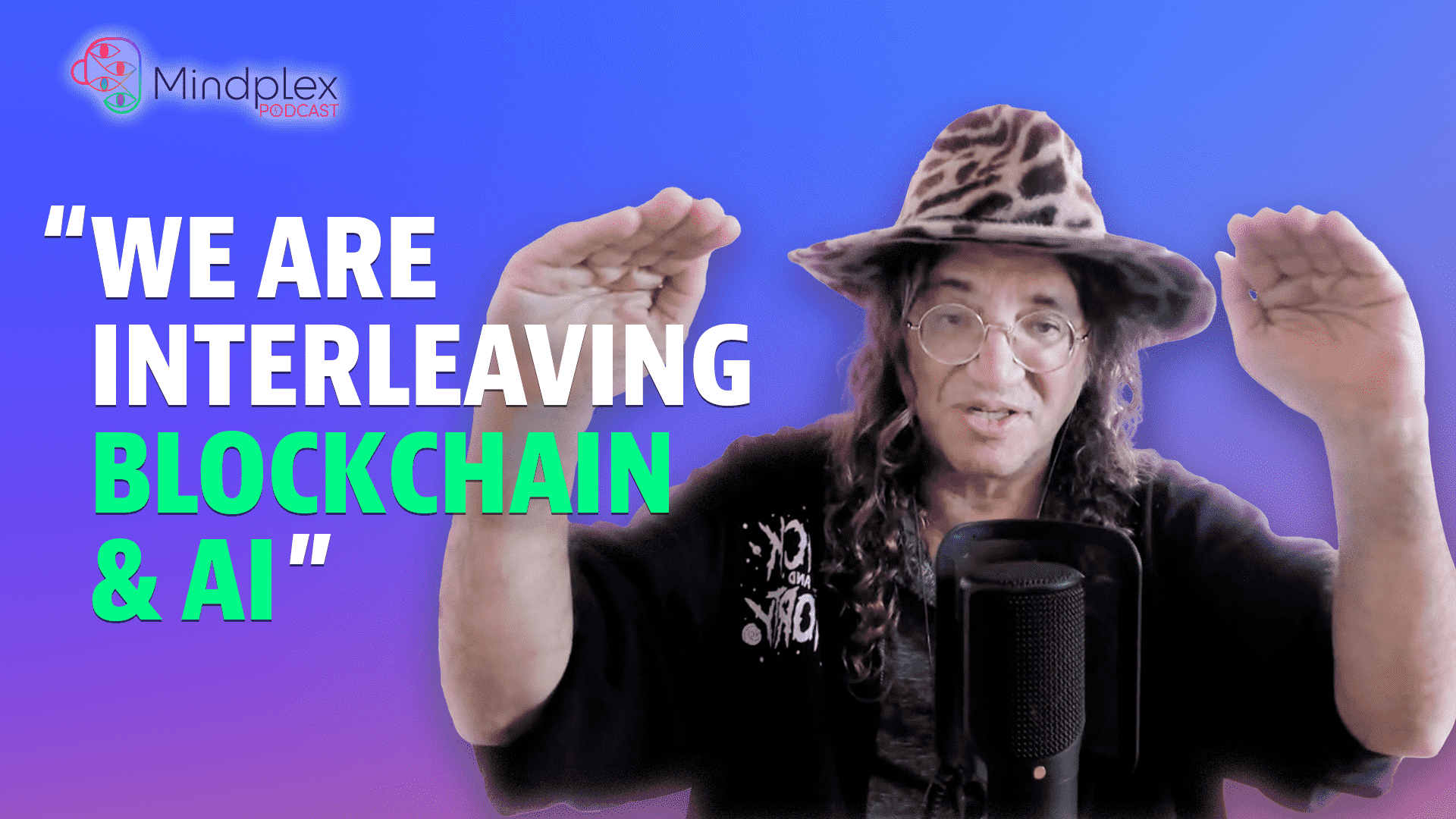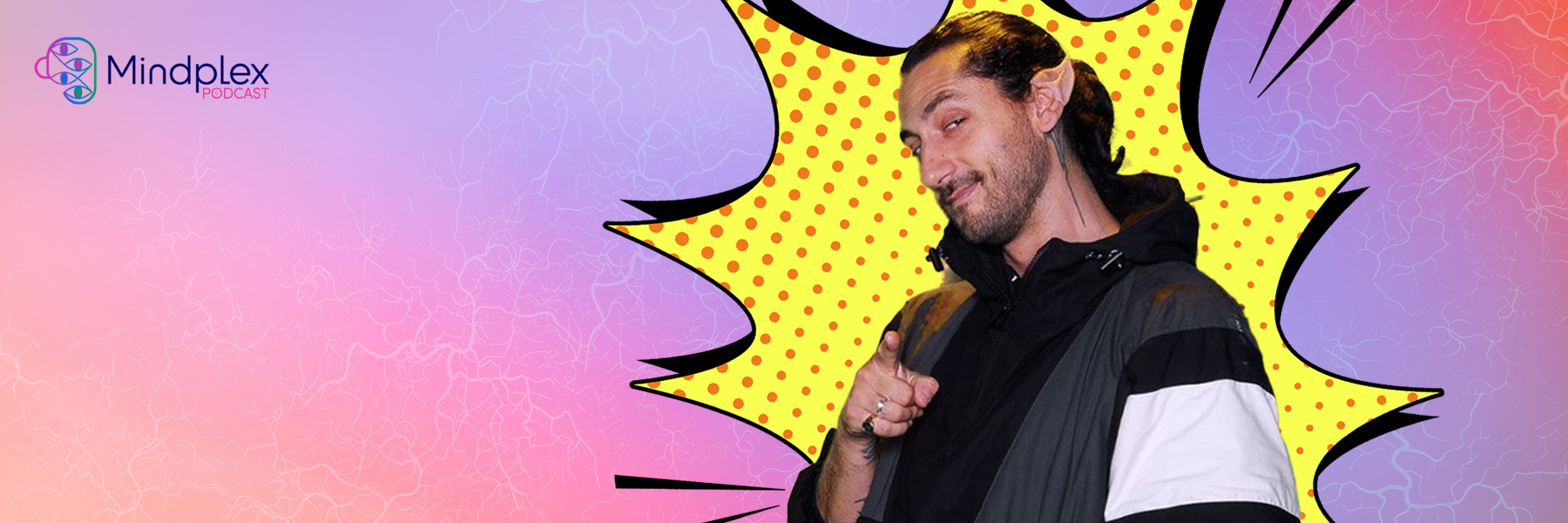Let us know your thoughts! Sign up for a Mindplex account now, join our Telegram, or follow us on Twitter.
The Four Seasons of Crypto: Where Are We Post-Halving?
We’re in the fifth month of 2024 and meme–infected crypto bros are crying out to sell in May and go away. Yes, it’s clear that the crypto market is in a bit of limbo following the thrilling rally that started with the announcement of BlackRock’s spot Bitcoin ETF application last year and peaked during the recent fourth Bitcoin halving event in April.
This has led many experts and influencers to dust off the old ‘Crypto Seasons’ theory to explain why a drop in market prices right now is to be expected and all part of the plan.
The theory is based on historical data that shows crypto price cycles moving in a specific pattern that resembles four periods or seasons. These seasons are not tied to specific months and days, but rather to the sentiments of crypto investors. Will it be the case again this year?
Understanding the four Seasons of Crypto
If you’ve been in crypto long enough, you’ll know that all things start and end with Bitcoin, and even more so its cyclical halving updates, which reduce mining rewards by 50% every four years to rein in coin emissions. Based on previous data, it’s fair to consider each Bitcoin Halving to fall in the first season, Crypto Spring.
Conversely, Bitcoin has been notorious for the disastrous crashes it’s had in its 15 year history, such as the 2018 and 2022 bear market lows and this Crypto Winter period normally indicates the end of a cycle.
Spring
Crypto spring is a period of stability and gradual growth, characterized by a recovery from the previous winter’s lows and a rebuilding of investor confidence. In the past, crypto springs have seen varying degrees of growth, with the spring of 2013 maintaining a stable market capitalization around $2.5 billion USD, while the spring of 2020 grew from $180 billion USD to over $500 billion USD.
Now in the crypto spring of 2024, the market is likely to experience a similar period of stability and gradual growth, driven by the recent Bitcoin halving and the anticipation of a potential bull run in the coming months.
Summer
Crypto summer is marked by a significant surge in market capitalization, accompanied by bullish sentiment and rising prices. Historical examples include the summer of 2017, where the market capitalization skyrocketed from $90 billion USD to over $650 billion USD, fueled by new projects and ICOs.
Looking ahead to the potential crypto summer of 2024, the market may experience a similar surge, driven by increased institutional adoption, the development of new blockchain technologies, and the growing mainstream acceptance of cryptocurrencies.
Autumn
Crypto autumn is characterized by a peak in market capitalization followed by initial signs of weakness, as investors start to take profits and volatility increases. In the fall of 2013, the market capitalization reached its peak of $15 billion USD, while in the fall of 2021, it reached an all-time high of over $2.5 trillion USD before its downturn.
As the crypto market progresses through the spring and summer of 2024, investors should remain vigilant for signs of a potential peak and the onset of crypto fall.
Winter
Winter is the harshest season, marked by a sharp decline in market capitalization, bear attacks, and falling prices. Past crypto winters, such as 2014-2015, 2018, and 2022 have been brutal as market faith quickly erodes after market capitalization crashes down, with the latter witnessing a drop from over $800 billion USD to approximately $100 billion USD.
While the severity and duration of the next crypto winter remain uncertain, investors should be prepared for the possibility of a market downturn following the potential peaks of the 2024-2025 crypto summer and autumn.

Previous Crypto Cycles
First Cycle (2010-2012)
- Spring: Early adoption and gradual growth
- Summer: First major bull run, driven by early adopters and Bitcoin gaining traction
- Autumn: Peak in prices, followed by the first significant correction
- Winter: Extended bear market, with prices stabilizing at a lower level
Second Cycle (2012-2014)
- Spring: Recovery from the previous winter, with the first Bitcoin halving in November 2012
- Summer: Gradual increase in prices and mainstream media attention
- Autumn: Peak in prices, followed by the collapse of Mt Gox exchange
- Winter: Prolonged bear market, with prices declining throughout 2014
Third Cycle (2014-2016)
- Spring: Slow recovery from the previous winter, with the second Bitcoin halving in July 2016
- Summer: Gradual increase in prices and growing interest in Ethereum and ICOs
- Autumn: Ethereum-driven bull run, with Bitcoin prices reaching new highs
- Winter: Short-lived correction, with prices remaining relatively stable
Fourth Cycle (2016-2018)
- Spring: Continued growth and mainstream adoption, with Bitcoin prices surging
- Summer: Exponential growth, driven by the ICO boom and retail investor FOMO
- Autumn: Peak in prices, followed by a significant correction and the bursting of the ICO bubble
- Winter: Prolonged bear market, with prices declining throughout 2018
Fifth Cycle (2018-2021)
- Spring: Recovery from the previous winter, with the third Bitcoin halving in May 2020
- Summer: Rapid growth, driven by institutional adoption and the emergence of DeFi and NFTs
- Autumn: Peak in prices, with Bitcoin reaching an all-time high of $69,000 in November 2021
- Winter: Correction and consolidation, with prices stabilizing at a higher level compared to the previous cycle
Sixth Cycle (2021-2024)
- Spring : Gradual recovery and increased mainstream acceptance, with the fourth Bitcoin halving in April 2024
- Summer: (Projected) Potential bull run driven by institutional adoption and technological advancements
- Autumn: (Projected) Possible peak in prices, followed by a correction
- Winter: (Projected) Potential bear market, with prices consolidating before the next cycle begins
Key Factors Influencing Crypto Seasons
Several factors influence the progression of crypto seasons, including:
- Bitcoin halving cycles: Reduce the supply of new Bitcoin, potentially driving up prices and marking the beginning of new market cycles.
- Global economic conditions: Inflation, interest rates, and market sentiment can impact the demand for cryptocurrencies as alternative investments.
- Regulatory developments: governments and financial institutions accept or reject crypto-related products and services; this can affect market stability and growth.
- Adoption and innovation: Emergence of new technologies like DeFi , AI cryptocurrencies, memecoins, DePin and NFTs can contribute to market excitement and attract new investors.
2024 Bitcoin Halving and the Current Crypto Cycle
The recent Bitcoin halving in April 2024 has set the stage for the beginning of a new crypto market cycle, coinciding with the spring season. The halving event, which reduces the amount of new Bitcoin entering circulation by 50%, has historically led to supply shocks and driven up prices.
Post-halving, the market usually goes sideways for a few months as investors lose interest, the US tax season rolls into town, and companies take their summer holidays till as late as September. This gives enough time for a real supply shock to set in, as mining rewards now yield only 450 Bitcoin a day instead of the previous 900.
We are likely to experience a surge in interest and investment later this year, as the reduced supply of new Bitcoin and increased demand contribute to a bullish sentiment and rising prices. Add US elections and interest rate cuts, and the stage is set for a hot crypto summer, driven by significant growth and mainstream adoption.
However, investors should remain cautious and prepared for potential volatility. The crypto market continues to mature and face new challenges, such as regulatory threats (especially from the SEC), high interest rates and fears of a recession.
How long will this crypto season last?
At present, retail investment is still very low compared to previous seasons. Some experts like Raoul Pal believe that the Bitcoin Spot ETF has caused us to front-run the bull run for the first time before the halving (historically Bitcoin had never previously seen a new all-time high price prior to a halving) and therefore all cards are off the table. Others believe we’re about to see a “supercycle” bull season again, and Arthur Hayes, a mega bull, thinks we’ll see a $750,000 Bitcoin in 2026 and then enter a crazy recession. In short, nobody knows.
Let’s look at crypto indicators such as the Crypto Fear and Greed Index and Stochastic RSI, which reflects buying and selling levels. Anything under 20 could represent a good time to accumulate assets, while a score of over 80 should start to send alarm bells off in your head that we’re nearing a top. Some traders try to ‘ladder’ in and out by dollar cost averaging (DCA), selling periodically.


How to Navigate The Current Crypto Season
Based on our Crypto Seasons theory, we’re now likely in the spring phase and on the cusp of summer. Crypto investors are being advised to:
- Stay informed about market trends and adapt strategies accordingly
- Consider accumulating assets during the spring season, while exercising caution and managing risk
- Be prepared to take profits and rebalance portfolios during summer and autumn
- Conduct thorough research and due diligence on new projects and emerging technologies
- Employ risk management techniques, such as diversification and stop-losses, to navigate potential market volatility
Conclusion
It’s important to note that while crypto history never repeats, it rhymes in a big way every time and this year will likely not be different.
Understanding how crypto cycles work and how to identify unique characteristics of each crypto season and the factors that influence them will help investors make more informed decisions
Let us know your thoughts! Sign up for a Mindplex account now, join our Telegram, or follow us on Twitter.
Unleash Secure Decentralized AI with the HyperAIBox | Highlights from S2EP19
Hypercycling Towards Superintelligence | Mindplex Podcast S2EP19
Crypto Market Makers: Liquidity Saviors or Sinners?
In cryptocurrency trading few things matter more than speed and information. Maybe one thing does: market liquidity. Ever traded a shitcoin with a small market cap, and seen its price crater (or moon) in a matter of minutes? In most cases, that is the result of some whale executing a big order, driving the price up or down by supply or demand.
This is where so-called market makers come in. They play a vital role in ensuring exchanges run smoothly by lubricating them with liquidity. But what exactly does liquidity mean, and why are market makers so crucial to crypto markets? Let’s dive in and explore the essential role they play.
What is a Crypto Market Maker?
A crypto market maker can be defined this way: it’s a person or financial entity who stands by to buy and sell a particular cryptocurrency on a continuous basis at publicly quoted prices. These are the prices found on the order books of centralized and decentralized exchange. Market makers place orders on exchanges to buy and sell cryptocurrencies like Bitcoin, Ethereum, or smaller coins. When they do this, they ensure there is sufficient liquidity – meaning other traders can easily enter or exit positions without causing drastic price movements.
Market makers profit by capitalizing (some say exploiting) the difference between the bidding price and the asking price. This difference is known as the bid-ask spread.
For instance, a market maker might quote a bid-ask spread of $99/$100 for Bitcoin. This means he is willing to buy Bitcoin at $99 and sell it at $100. If a buyer and seller transact with the market maker as a counterparty, the market maker earns $1, minus their transaction fee. Multiply such small profits by thousands or even millions of transactions, and it becomes a very lucrative business model.
To manage their risk, market makers run (and fine-tune) advanced algorithms and technology to continuously adjust prices based on factors like trading volume, price fluctuations, and market volatility. This high-frequency trading allows them to capitalize on fleeting price discrepancies across different exchanges and currency pairs.
Why are Crypto Market Makers Important?
In the crypto space, market makers serve several important functions.
First and foremost, by providing continuous liquidity, they make it much easier for buyers and sellers to trade without causing sudden, drastic price movements. Imagine if you had to wait for another trader who wants to take the exact opposite position to yours every time you wanted to buy or sell a coin. The market would move extremely slowly.
Additionally, market makers help to stabilize prices and reduce volatility by stepping in to buy when prices fall, and to sell when prices rise. Without them, crypto price charts would resemble seismographs, with prices jumping all over. By tightening spreads and balancing order flow, market makers ‘smooth out’ price action.
Several types of entities engage in crypto market making. Some are individual traders looking for profits from bid-ask spreads. Others are professional market making firms hired by exchanges or projects themselves to ensure sufficient liquidity.
Many exchanges also act as market makers, either openly or behind the scenes. High-frequency trading (HFT) firms and arbitrageurs also contribute to liquidity through their rapid, algorithm-driven strategies. Finally, some token issuers and crypto projects provide their own liquidity to facilitate trading of their coin or token.
In employing market-making strategies, firms typically rely on a combination of advanced statistical models and formulas, ultrafast computers, and automated trading systems.
Popular strategies include:
- statistical arbitrage (simultaneously buying and selling the same asset in different markets to profit from tiny price discrepancies),
- order flow trading (analyzing and trading based on order flow data),
- market-neutral strategies (aiming to profit regardless of whether prices go up or down).
How Market Makers Make Their Money
So how exactly do market makers profit? The most obvious way is through the bid-ask spread. Every time they complete a round-trip transaction (i.e. buying and selling an equal quantity), they earn the spread between their buy and sell prices.
Many market makers also receive commissions or rebates from exchanges for the liquidity they provide. Finally, some market makers generate profits by opening their own directional trading positions based on anticipated market movements.
Example: DWFLabs and $Floki
One of the most well-known crypto market makers are DWF Labs, who usually drive up the price of their client’s assets significantly. Follow their portfolio here on CoinMarketCap. Their most recent success is the $GUMMY token, which peaked at a $250 million market cap.
By accumulating $FLOKI tokens quietly over several months, DWFLabs was able to establish a strong position. They then orchestrated a massive 772% price pump in just three weeks, showcasing their ability to generate substantial returns quickly.

However, market makers like DWFLabs often employ controversial tactics to manipulate prices. By artificially creating new lows, they can starve out retail investors and accumulate tokens at discounted prices. This cycle of pumps and dumps creates a challenging environment for average token holders, who may struggle to navigate the volatility created by market maker activity.
Therefore, when analyzing a crypto asset, make sure to take a look at both the price and the market cap. The higher the market cap, the more liquid the coin will be, and the less volatile in price.

The Good and Bad of Market Makers
An important question arises – are market makers good or bad for the average crypto investor? As with most things, there are two sides to this debate.
On the positive side, the liquidity market makers provide is undeniably valuable. Without it, crypto markets would be highly illiquid, slow-moving, and volatile. Their activity makes it much easier for investors to enter and exit trades seamlessly. Furthermore, competition between market makers keeps spreads tight, allowing investors to trade at fair prices close to the market price.
However, some argue that market makers – particularly large, sophisticated firms – can take advantage of their role for manipulative purposes.
Market makers have a range of ways they can potentially manipulate asset prices. With their large capital reserves and advanced algorithms, they can engage in practices like front-running, where they exploit advance knowledge of pending orders to make trades ahead of other investors. They might also employ quote-stuffing, placing large numbers of buy or sell orders they don’t intend to execute in order to create a false impression of demand or supply.
Another tactic is wash-trading, simultaneously buying and selling the same asset to generate fake trading volume and momentum. Market makers’ ability to set bid-ask spreads also gives them some control over short-term price movements.
The opacity of some market makers’ operations, and their access to information not available to regular traders raises concerns about asymmetric advantages. While not all market makers act maliciously, they all follow the profit motive. This comes with an inherent potential for price manipulation that necessitates robust oversight and regulation.
Conclusion
Crypto market makers are essential actors in the cryptocurrency ecosystem. While not without controversy, these entities – through their combination of advanced technology and trading expertise – help form the circulatory system of the crypto markets we know today.
While they can manipulate markets with their tactics (especially small illiquid markets), most would agree that the benefits of liquidity and more efficient markets outweigh the potential drawbacks. And in most jurisdictions, there are rules and regulations in place to prevent market abuse. While imperfect, market makers are arguably a necessary presence to ensure crypto markets run smoothly.
By providing continuous liquidity, tightening spreads, and balancing order flow, they serve the crucial role of facilitating efficient trading and more stable prices. For any investor to be profitable long-term, understanding how they operate will help them unlock access to the inner workings of crypto trading.
Let us know your thoughts! Sign up for a Mindplex account now, join our Telegram, or follow us on Twitter.
Is the TikTok Ban Unconstitutional? | Mindplex Podcast S2EP18
The Era of 1.58-bit Large Language Models: A Breakthrough in Efficiency
As large language models (LLMs) continue to grow in capabilities, their increasing computational demands have raised concerns about efficiency, cost, and environmental impact. In a groundbreaking development, researchers at Microsoft Research have introduced BitNet b1.58, a novel 1.58-bit variant of LLMs that could usher in a new era of high-performance, cost-effective language models.
The Era of 1-bit LLMs
The field of AI has witnessed a rapid expansion in the size and power of LLMs, but this growth has come at a significant computational cost. Post-training quantization techniques have aimed to reduce the precision of weights and activations, but a more optimal solution was needed. Recent work on 1-bit model architectures, such as BitNet, has paved the way for a promising new direction in reducing the cost of LLMs while maintaining their performance.
BitNet b1.58: The 1.58-bit LLM Variant
BitNet b1.58 represents a significant advancement in this area, introducing a unique quantization approach that constrains every parameter (weight) of the LLM to ternary values of {-1, 0, 1}. This innovative technique, combined with efficient computation paradigms and LLaMA-alike components for better open-source integration, enables BitNet b1.58 to achieve remarkable results.
Results: Matching Performance, Reducing Cost
In a comprehensive evaluation, BitNet b1.58 demonstrated its ability to match the perplexity and end-task performance of full-precision (FP16) LLM baselines, starting from a model size of 3 billion parameters. As the model size scales up, the benefits of BitNet b1.58 become even more pronounced, with substantial reductions in memory usage, latency, throughput, and energy consumption compared to FP16 LLMs.
At the 70 billion parameter scale, BitNet b1.58 is up to 4.1 times faster, uses up to 7.2 times less memory, achieves up to 8.9 times higher throughput, and consumes up to 41 times less energy than its FP16 counterparts. These astounding results demonstrate the potential of 1.58-bit LLMs to provide a Pareto improvement over traditional models, delivering both high performance and cost-effectiveness.

Discussion and Future Work: Enabling New Possibilities
The development of 1.58-bit LLMs like BitNet b1.58 opens up a world of possibilities and exciting future research directions. One intriguing prospect is the potential for further cost reductions through the integration of efficient Mixture-of-Experts (MoE) architectures. Additionally, the reduced memory footprint of BitNet b1.58 could enable native support for longer sequence lengths, a critical demand in the era of LLMs.
Perhaps most significantly, the exceptional efficiency of 1.58-bit LLMs paves the way for deploying these models on edge and mobile devices, unlocking a wide range of applications in resource-constrained environments. Furthermore, the unique computation paradigm of BitNet b1.58 calls for the design of specialized hardware optimized for 1-bit operations, which could further enhance the performance and efficiency of these models.
Conclusion
In the rapidly evolving landscape of large language models, BitNet b1.58 represents a groundbreaking achievement, introducing a new era of 1.58-bit LLMs that combine state-of-the-art performance with unprecedented efficiency. By addressing the computational challenges associated with traditional LLMs, this research paves the way for more sustainable and cost-effective scaling, enabling the deployment of these powerful models in a wider range of applications and environments. As the field continues to advance, BitNet b1.58 stands as a testament to the innovative potential of quantized LLMs and the exciting possibilities that lie ahead.
Let us know your thoughts! Sign up for a Mindplex account now, join our Telegram, or follow us on Twitter.
Inside the Mind of Ben Ditto | Mindplex Podcast S2EP17
How To Scale AGI Without Losing Data | Highlights from S2EP13
Revolutionizing Language Models: The Emergence of BitNet b1.58
In recent years, the field of Artificial Intelligence has witnessed an unprecedented surge in the development of Large Language Models (LLMs), fueled by breakthroughs in deep learning architectures and the availability of vast amounts of text data. These models, equipped with powerful Transformer architectures, have demonstrated remarkable proficiency across a plethora of natural language processing tasks, from language translation to sentiment analysis. However, this rapid growth in the size and complexity of LLMs has brought about a host of challenges, chief among them being the staggering energy consumption and memory requirements during both training and inference phases.
To address these challenges, researchers have ventured into various techniques aimed at optimizing the efficiency of LLMs, with a particular focus on post-training quantization. This approach involves reducing the precision of model parameters, thereby curtailing memory and computational demands. While post-training quantization has proven effective to some extent, it remains suboptimal, especially for large-scale LLMs.
In response to this limitation, recent endeavors have explored the realm of 1-bit model architectures, epitomized by BitNet. These models leverage a novel computation paradigm that drastically reduces energy consumption by eschewing floating-point arithmetic in favor of integer operations, particularly beneficial for the matrix multiplication operations inherent in LLMs. BitNet, in its original form, has demonstrated promising results, offering a glimpse into a more energy-efficient future for LLMs.
Building upon the foundation laid by BitNet, researchers have introduced BitNet b1.58, a significant advancement in the realm of 1-bit LLMs. Unlike its predecessors, BitNet b1.58 adopts a ternary parameterization scheme, with model weights constrained to {-1, 0, 1}, thereby achieving a remarkable compression ratio of 1.58 bits per weight. This innovative approach retains all the advantages of the original BitNet while introducing enhanced modeling capabilities, particularly through explicit support for feature filtering.

BitNet b1.58 represents a paradigm shift in LLM architecture, offering a compelling alternative to traditional floating-point models. Notably, it matches the performance of full-precision baselines, even surpassing them in some cases, while simultaneously offering significant reductions in memory footprint and inference latency. Furthermore, its compatibility with popular open-source software ensures seamless integration into existing AI frameworks, facilitating widespread adoption and experimentation within the research community.
Beyond its immediate impact on model performance and efficiency, BitNet b1.58 holds immense promise for a wide range of applications, particularly in resource-constrained environments such as edge and mobile devices. The reduced memory and energy requirements of BitNet b1.58 pave the way for deploying sophisticated language models on devices with limited computational resources, unlocking new possibilities for on-device natural language understanding and generation.
Looking ahead, the development of dedicated hardware optimized for 1-bit LLMs could further accelerate the adoption and proliferation of BitNet b1.58, ushering in a new era of efficient and high-performance AI systems. As the field continues to evolve, BitNet b1.58 stands as a testament to the ingenuity and perseverance of researchers striving to push the boundaries of AI technology.
Let us know your thoughts! Sign up for a Mindplex account now, join our Telegram, or follow us on Twitter.












.png)

.png)


.png)